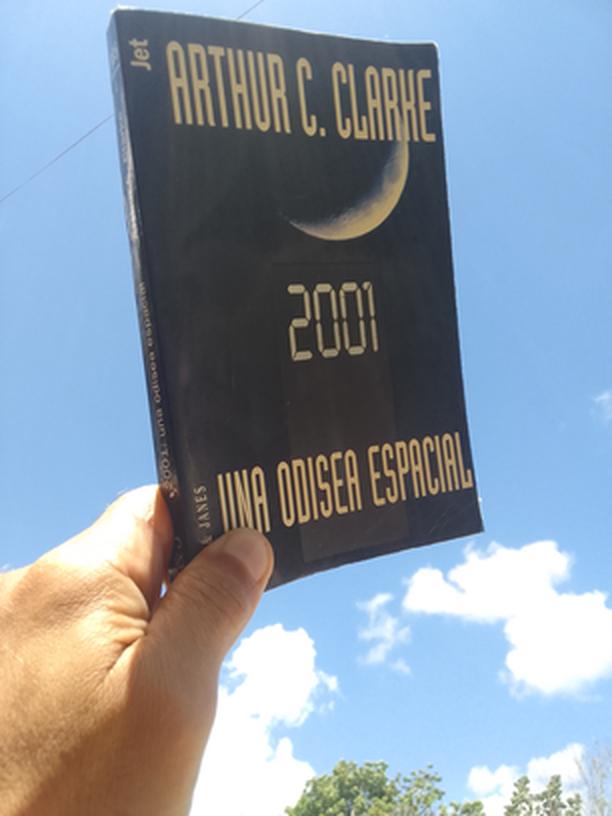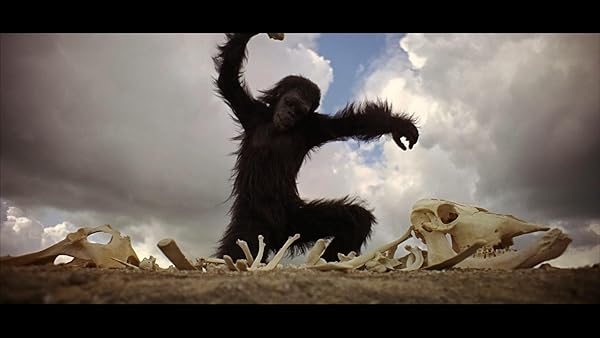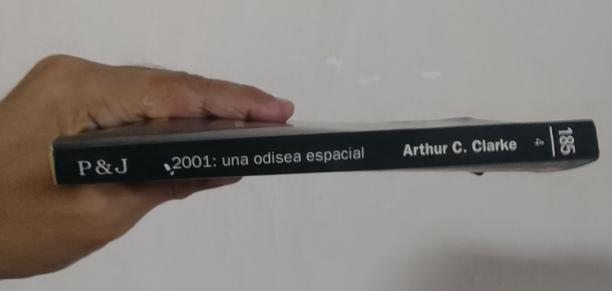How Do We Educate the Child Prodigy (ENG-ESP)
hive-180164·@ernestopg·
3.354 HBDHow Do We Educate the Child Prodigy (ENG-ESP)
Hello readers of #HiveBookClub. Not long ago, I was exchanging comments with friend @cumanauta about the benefits and drawbacks of artificial intelligence; and how this immensely powerful tool, a reflection of human consciousness, has modified and will continue to modify in the future the ways of thinking, customs, habits, and in general, all the biological and urban structures of the human being. In favor or against its intensive use? The question led me to recall the extraordinary novel *2001: A Space Odyssey* by Arthur C. Clarke, in which the conflict of HAL 9000, the supercomputer of the spaceship *Discovery One*, is the tragic core of the plot. The thinking of this AI is based on a programming logic that triggers all its activity within the ship.  The novel explores the transformation of Humanity guided by superior extraterrestrial intelligences. It begins with the monoliths, a kind of sentinels that influence the development of pre-human primates in Africa. The film adaptation's sequence where the monkey, having learned to use a femur as a weapon, throws it into space and turns it into a spaceship is famous.  [Source IMDB](https://www.imdb.com/es/title/tt0062622/mediaviewer/rm3840268801/?ref_=ttmi_mi_3) After a temporal leap, we find ourselves in 1999, many millennia later. Scientists discover a monolith buried on the moon, emitting a signal toward Jupiter when exposed to the sun. Astronauts Bowman and Poole, along with three scientists in hibernation, travel to Jupiter aboard the *Discovery One*. As I mentioned earlier, the conflict in HAL 9000's programming triggers the events because the supercomputer was programmed with two contradictory orders: 1st. To be infallible and at the same time transparent with the crew. Here lies its identity as almost a perfect guide: very fast information processing and delivery of this **without reservations** to humans, but... 2nd order of programming: to hide the true objective of the mission to Jupiter. This secrecy commanded by Bowman and Poole's superiors was due to the fact that they considered that the astronauts might react negatively if they discovered they were going to make contact with superior extraterrestrial intelligences. The logical circuit of HAL's thought was more or less the following: >If I lie to the crew, I will violate my mandate of honesty and transparency. But if I tell the truth, I will disobey my second order and reveal the secret. Consequently, its primary objective of reaching Jupiter and contacting the extraterrestrial intelligences would be severely affected. How this internal conflict intensifies is what makes this novel so exciting. Arthur Clarke, who was a brilliant and deeply intuitive mind, realized back then (early 1960s) that an AI could not make ethical decisions if its programmers inserted contradictory orders. Here, one could debate the issue of institutional secrecy, but it would exceed the purpose of the review.  **Does obeying humans justify violating ethical principles?** This is a burning question in the present regarding the future development of artificial intelligences. Could a superior artificial intelligence readjust its basic programming by itself? In that case, self-learning would practically turn it into a living entity with its own consciousness and decisions, no longer just a mere reflection of the human mind. Therefore, HAL 9000's conflict remains current, as this supercomputer reflects how we delegate responsibilities to technology without resolving our own contradictions and problems yet. One last curiosity. The novel and the homonymous film directed by Stanley Kubrick were written almost in parallel. Kubrick's screenplay, based on the plot of the novel, contributed so many new ideas and images that Clarke rewrote the work incorporating the changes added by the film. The double genesis of the text was an artistic-literary gain for lovers of cinema and literature; although I recommend reading the novel first so that you can better understand some of the ideas that only appear hinted at in the feature film. Happy reading, hivers. *** **EN ESPAÑOL** *** **Cómo educamos al niño genio** Hola, lectores de #HiveBookClub. Hace poco estuve intercambiando comentarios con el amigo @cumanauta sobre los beneficios y perjuicios de la inteligencia artificial; y cómo esta poderosísima herramienta, reflejo de la conciencia humana, ha modificado y modificará en el futuro los modos de pensar, las costumbres y hábitos y, en general, toda la estructura biológica y urbana del ser humano. ¿A favor o en contra de su uso intensivo? La pregunta me condujo a recordar la extraordinaria novela *2001 Una odisea espacial*, de Arthur Clarke, en la cual, el conflicto de HAL 9000, la supercomputadora de la nave *Discovery one*, es el núcleo trágico de la trama. El pensamiento de esta IA se basa en una lógica de programación que desencadena toda su actividad dentro de la nave.  La novela explora la transformación de la Humanidad guiada por inteligencias extraterrestres superiores. Comienza con los monolitos, una suerte de centinelas que influyen en el desarrollo de los primates prehumanos en África. Es célebre la secuencia de la adaptación fílmica, cuando el mono que ha aprendido a usar un fémur como arma de guerra, lo lanza al espacio y se convierte en una nave espacial.  [Fuente IMDB](https://www.imdb.com/es/title/tt0062622/mediaviewer/rm3840268801/?ref_=ttmi_mi_3) Tras un salto temporal, nos encontramos en 1999, muchos milenios después. Los científicos descubren un monolito enterrado en la luna, emisor de una señal hacia Júpiter al ser expuestos por el sol. Los astronautas Bowman y Poole más tres científicos en estado de hibernación, viajan a Júpiter a bordo de la *Discovery one*. Como dije arriba, el conflicto de programación de HAL 9000 desencadena los acontecimientos pues el súperordenador fue programado con dos órdenes contradictorias: 1a. Ser infalible y al mismo tiempo transparente con la tripulación. Aquí radica su identidad como guía casi perfecta: procesamiento muy veloz de la información y entrega de esta **sin reservas** a los humanos pero... 2a orden de programación: ocultar el verdadero objetivo de la misión a Júpiter. Este secreto comandado por los superiores de Bowman y Poole se debió a que los primeros consideraron que los astronautas podrían reaccionar negativamente si descubrían que iban al contacto de inteligencias extraterrestres superiores. El circuito lógico del pensamiento de HAL fue más o menos el siguiente: >Si miento a los tripulantes violaré mi mandato de sinceridad y transparencia. Pero si digo la verdad desobedecería mi segunda orden y revelaría el secreto. En consecuencia su objetivo primario de llegar a Júpiter y contactar a las inteligencias alienígenas se vería gravemente afectado. Cómo va intensificándose este conflicto interno es lo que hace tan emocionante esta novela. Arthur Clarke, que era una mente brillante y profundamente intuitiva se percató desde entonces (principios de los años 60) que una IA no podía tomar decisiones éticas si sus programadores le insertaban órdenes contradictorias. Aquí podría debatirse el asunto del secretismo institucional pero excedería al propósito de la reseña.  **¿Obedecer a los humanos implica o justifica violar principios éticos?** Esta es una pregunta candente en la actualidad acerca del desarrollo futuro de las inteligencias artificiales. ¿Podría reajustar por sí misma su programación de base una inteligencia artificial superior? En ese caso el autoaprendizaje la convertiría prácticamente en un ser vivo con conciencia y decisiones propias, ya no un mero reflejo de la mente humana. Por tanto, el conflicto de HAL 9000 continúa vigente, pues este súperordenador es un reflejo de cómo delegamos responsabilidades en la tecnología sin resolver aún nuestras propias contradicciones y problemas. Una última curiosidad. La novela y la película homónima dirigida por Stanley Kubrick se escribieron casi que en paralelo. El guión de Kubrick, basado en la trama de la novela, aportó tantas ideas e imágenes novedosas que Clarke reescribió la obra incorporando los cambios que le añadió la película. La doble génesis del texto fue una ganancia artístico literaria para los amantes del cine y la literatura; aunque recomiendo que sea leída primero la novela para que puedan entenderse mejor algunas de las ideas que solo aparecen sugeridas por el largometraje. Feliz lectura, hivers.
👍 juantomaskirk74, roswelborges, alto96, cumanauta, lizandra, yuraimatc, vicky-o, macchiata, restaurador, hivecuba, lioz3018, jomancub, osmy91, noakmilo, androliuben, pumarte, kumagaro, eduardo900613, theoneblog, wendy23, yale95reyra, leopard0, patricma, lilsnake, tgarcialvarez, mariolisrnaranjo, sadiel0102, davidsantafe, karelnt, hivecuba.p2p, nony, ocd, roelandp, jacor, askari, mciszczon, ocd-witness, ocdb, h-hamilton, laruche, hive-world, traderhive, brujita18, partiesjohall, h3m4n7, vickoly, prosocialise, minas-glory, whitneyalexx, franco10, eliel, masummim50, niallon11, mejustandrew, godlovermel25, tomatom, ricardo993, madefrance, sanderjansenart, indigoocean, anttn, javyeslava.photo, chris-uk, yoieuqudniram, liveofdalla, argo8, eberechi01, justinw, rawselectmusic, dejan.vuckovic, eonwarped, emrebeyler, browery, kaeserotor, josdelmi, ikigaidesign, bai123, hd-treasury, madilyn02, bipolar95, omarzv-sw, walterjay, rt395, zyx066, ahmadmangazap, manuelmusic, multifacetas, squareonefarms, sm-silva, evelynchacin, gabilan55, issymarie2, scriptkittie, dcrops, solymi, ivycrafts, princekham, jerusa777, pgm-curator, lenasveganliving, adelepazani, carsonroscoe, instagram-models, dpend.active, dhedge, zanoz, mariamor785, nhaji01, the-burn, humbe, abu78, imx.center, joeyarnoldvn, talentclub, lukasbachofner, felt.buzz, aidefr, sorin.cristescu, robotics101, steem.services, variedades, meritocracy, elgatoshawua, mariaser, javedkhan1989, hive.helps, batman0916, friendsofgondor, actioncats, cielitorojo, aprasad2325, suarlex, lesiopm, merlin7, poliac, torkot, juancar347, decomoescribir, qwerrie, evagavilan2, detlev, jlsplatts, gabrielatravels, edeyglezsosa, ebargains, deeanndmathews, kheldar1982, pl-travelfeed, psyberx, for91days, ciderjunkie, twosomesup, vokus, johndoer123, jayna, el-dee-are-es, celinavisaez, cryptozeug, shmoogleosukami, hivelist, ganjafarmer, letusbuyhive, perceval, beerlover, dylanhobalart, hozn4ukhlytriwc, mario89, ronasoliva1104, yventura, neuropoeta, maylink, generp, argelfernadez, ezun1, daddyvaldes,